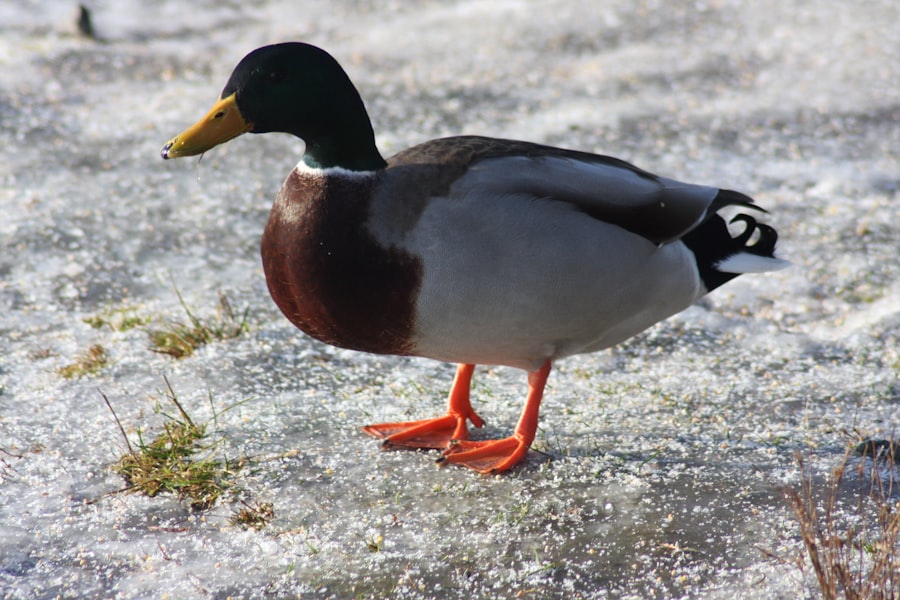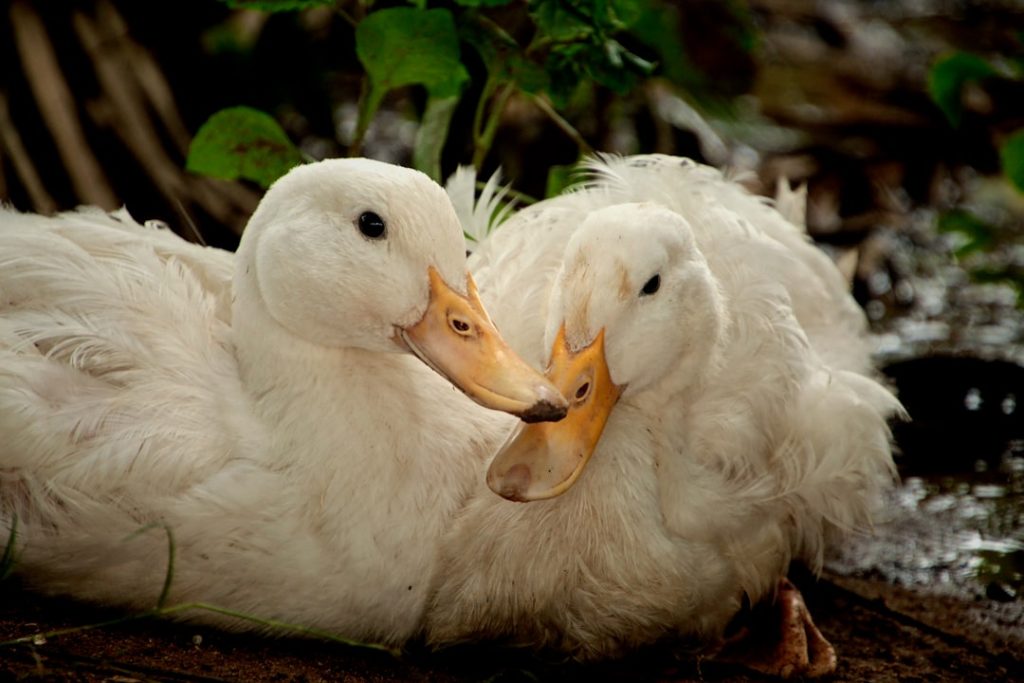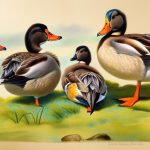Duck farming has been a traditional practice in the Philippines for centuries, with ducks being raised for their meat, eggs, and feathers. The country is home to a variety of duck breeds, both native and exotic, each with its own unique characteristics and traits. Duck farming has become an important part of the agricultural industry in the Philippines, providing a source of income for many farmers and contributing to the country’s food security. In recent years, there has been a growing interest in duck farming as a sustainable and profitable agricultural venture, leading to an increase in the demand for different duck breeds. This article will explore the different duck breeds in the Philippines, their characteristics, and the challenges and opportunities in duck farming in the country.
Table of Contents
- 1 Native Duck Breeds in the Philippines
- 2 Exotic Duck Breeds in the Philippines
- 3 Popular Duck Breeds for Commercial Farming
- 4 Characteristics and Traits of Different Duck Breeds
- 5 Challenges and Opportunities in Duck Farming in the Philippines
- 6 Conclusion and Future of Duck Breeding in the Philippines
- 7 FAQs
Key Takeaways
- There are various duck breeds in the Philippines, both native and exotic, that are raised for different purposes such as meat, eggs, and ornamental purposes.
- Native duck breeds in the Philippines include the Pateros, Itik Pinas, and the Mallard, which are well-adapted to the local environment and are known for their resilience and ability to thrive in the Philippine climate.
- Exotic duck breeds in the Philippines, such as the Pekin and Khaki Campbell, are also popular among farmers for their high egg production and fast growth rate.
- Popular duck breeds for commercial farming in the Philippines include the Pekin, Muscovy, and Khaki Campbell, which are favored for their high meat and egg production.
- Different duck breeds in the Philippines have unique characteristics and traits, such as the Pekin’s white plumage and the Muscovy’s ability to forage for food, which make them suitable for specific farming needs and preferences.
- Challenges in duck farming in the Philippines include disease management and market competition, while opportunities lie in the increasing demand for duck products and the potential for value-added duck products in the market.
- The future of duck breeding in the Philippines holds promise with the growing interest in sustainable and organic farming, as well as the potential for duck products to cater to diverse consumer preferences and dietary needs.
Native Duck Breeds in the Philippines
The Philippines is home to several native duck breeds that have been raised by farmers for generations. One of the most popular native duck breeds is the Pateros duck, also known as the Itik or Mallard duck. This breed is known for its excellent egg-laying ability and is often raised for its eggs, which are used in traditional Filipino dishes such as balut and salted eggs. Another native duck breed is the Muscovy duck, which is known for its large size and flavorful meat. Muscovy ducks are also valued for their ability to forage for food and their resistance to diseases, making them a popular choice for free-range farming. The native duck breeds in the Philippines are well-adapted to the local climate and environment, making them a sustainable choice for small-scale farmers.
On the other hand, the Philippine Mallard or Pateros duck is a small-sized breed that is known for its high egg production and adaptability to different environments. It is a popular choice for backyard farming due to its low maintenance requirements and ability to thrive in small spaces. Another native breed is the Philippine Mallard or Pateros duck, which is known for its excellent egg-laying ability and adaptability to different environments. This breed is often raised for its eggs, which are used in traditional Filipino dishes such as balut and salted eggs. The native duck breeds in the Philippines play a crucial role in the country’s agricultural industry, providing a sustainable source of meat and eggs for local consumption.
Exotic Duck Breeds in the Philippines
In addition to native duck breeds, there are also several exotic duck breeds that have been introduced to the Philippines. One of the most popular exotic duck breeds is the Pekin duck, which is known for its fast growth rate and high meat yield. Pekin ducks are often raised in commercial farms due to their profitability and are favored for their tender and flavorful meat. Another exotic duck breed is the Khaki Campbell, which is valued for its high egg production and excellent feed conversion ratio. Khaki Campbell ducks are known for their ability to lay large quantities of eggs, making them a popular choice for egg production in the Philippines.
Another exotic breed that has gained popularity in the Philippines is the Indian Runner duck, which is known for its upright posture and distinctive appearance. Indian Runner ducks are valued for their excellent egg-laying ability and are often raised for their eggs in commercial farms. The introduction of exotic duck breeds has provided Filipino farmers with a wider range of options for duck farming, allowing them to diversify their products and meet the growing demand for duck meat and eggs in the country. These exotic duck breeds have proven to be well-suited to the Philippine climate and have contributed to the expansion of the duck farming industry in the country.
Popular Duck Breeds for Commercial Farming
Commercial duck farming in the Philippines has seen a rise in popularity in recent years, with several duck breeds being favored for their commercial viability. One of the most popular duck breeds for commercial farming is the Pekin duck, which is known for its rapid growth and high meat yield. Pekin ducks are often raised in large-scale farms due to their profitability and are valued for their tender and flavorful meat. Another popular choice for commercial duck farming is the Khaki Campbell, which is prized for its high egg production and efficient feed conversion ratio. Khaki Campbell ducks are often raised for their eggs in commercial farms, providing a sustainable source of income for many farmers.
In addition to Pekin and Khaki Campbell ducks, Muscovy ducks are also favored for commercial farming due to their large size and flavorful meat. Muscovy ducks are known for their ability to forage for food and their resistance to diseases, making them a popular choice for free-range farming. The popularity of these duck breeds for commercial farming has contributed to the growth of the duck industry in the Philippines, providing farmers with a profitable venture that meets the demand for duck meat and eggs in the local market.
Characteristics and Traits of Different Duck Breeds
Each duck breed has its own unique characteristics and traits that make it suitable for specific purposes in duck farming. For example, Pekin ducks are known for their rapid growth rate and high meat yield, making them an ideal choice for meat production in commercial farms. Pekin ducks are also valued for their calm temperament and adaptability to different environments, making them easy to raise in various farming systems. On the other hand, Khaki Campbell ducks are prized for their high egg production and efficient feed conversion ratio, making them a popular choice for egg production in commercial farms. Khaki Campbell ducks are known for their active nature and excellent foraging abilities, allowing them to thrive in free-range farming systems.
Muscovy ducks are valued for their large size and flavorful meat, making them a popular choice for meat production in both commercial and backyard farms. Muscovy ducks are also known for their ability to fly and perch, as well as their resistance to diseases, making them well-suited to free-range farming systems. The different characteristics and traits of duck breeds make them suitable for various purposes in duck farming, allowing farmers to choose breeds that best meet their production goals and farming conditions.
Challenges and Opportunities in Duck Farming in the Philippines

While duck farming presents several opportunities for farmers in the Philippines, it also comes with its own set of challenges. One of the main challenges faced by duck farmers is disease management, as ducks are susceptible to various diseases that can affect their health and productivity. Proper biosecurity measures and vaccination programs are essential to prevent disease outbreaks and ensure the health of ducks on farms. Another challenge is market access, as farmers need to find reliable markets for their duck products to ensure a steady income from their farming activities.
Despite these challenges, there are also several opportunities in duck farming in the Philippines. The growing demand for duck meat and eggs presents a lucrative opportunity for farmers to capitalize on this market trend. Additionally, there is an increasing interest in sustainable and organic duck products, providing farmers with an opportunity to cater to this niche market. Duck farming also offers environmental benefits, as ducks can be raised in integrated farming systems that promote sustainable agriculture practices such as natural pest control and nutrient recycling.
Conclusion and Future of Duck Breeding in the Philippines
In conclusion, duck breeding in the Philippines encompasses a wide variety of native and exotic breeds that cater to different farming systems and production goals. The diverse characteristics and traits of these breeds provide farmers with options to meet the growing demand for duck meat and eggs in the country. While there are challenges in disease management and market access, there are also opportunities for farmers to capitalize on the increasing demand for sustainable and organic duck products.
The future of duck breeding in the Philippines looks promising, with advancements in breeding techniques, disease management, and market access contributing to the growth of the industry. As consumer preferences shift towards sustainable and organic products, there is an opportunity for Filipino farmers to position themselves as suppliers of high-quality duck products that meet these demands. With proper support from government agencies and industry stakeholders, duck breeding has the potential to become a thriving sector within the Philippine agricultural industry, providing farmers with a sustainable source of income while contributing to food security in the country.
If you’re interested in learning more about duck breeds in the Philippines, you might also want to check out an article on Poultry Wizard about the best kind of coop for chickens. Understanding the different coop options can help you create a suitable environment for your ducks as well. You can read the article here.
FAQs
What are the different duck breeds in the Philippines?
There are several duck breeds in the Philippines, including the Pateros duck, the Itik Pinas, the Peking duck, the Khaki Campbell, and the Muscovy duck.
What is the most common duck breed in the Philippines?
The most common duck breed in the Philippines is the Pateros duck, also known as the Itik Pateros. It is a small, native duck breed known for its ability to lay eggs and adaptability to local conditions.
What are the characteristics of the Pateros duck?
The Pateros duck is small in size, with a white body and a black head. It is known for its high egg production and adaptability to various environments, making it a popular choice for duck farming in the Philippines.
What is the Itik Pinas?
The Itik Pinas is a breed of duck developed by the Philippine Council for Agriculture, Aquatic, and Natural Resources Research and Development (PCAARRD). It is a crossbreed of Pateros and Mallard ducks, known for its high egg production and meat quality.
What are the uses of duck breeds in the Philippines?
Duck breeds in the Philippines are primarily raised for their eggs and meat. They are also used for weed and pest control in rice fields, as well as for their feathers and down. Additionally, ducks are valued for their ability to thrive in wetland environments and contribute to ecological balance.
Meet Walter, the feathered-friend fanatic of Florida! Nestled in the sunshine state, Walter struts through life with his feathered companions, clucking his way to happiness. With a coop that’s fancier than a five-star hotel, he’s the Don Juan of the chicken world. When he’s not teaching his hens to do the cha-cha, you’ll find him in a heated debate with his prized rooster, Sir Clucks-a-Lot. Walter’s poultry passion is no yolk; he’s the sunny-side-up guy you never knew you needed in your flock of friends!







